
CAE Software【Femtet】Murata Software Co., Ltd.

Example5 Resonance in Cavity
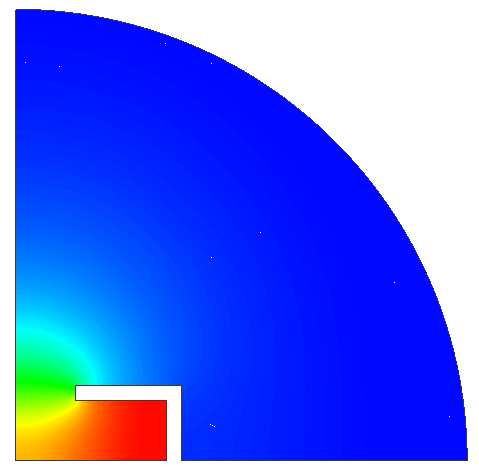
General
-
The resonance of sound waves excited in a cavity is analyzed.
-
The sound waves radiated from the cavity are peaked when the excitation frequency matches the cavity’s resonant frequency.
-
Unless specified in the list below, the default conditions will be applied.
Analysis Space
|
Item |
Settings |
|
Analysis Space |
Axisymmetric |
|
Model unit |
mm |
Analysis Conditions
|
Item |
Settings |
|
Solver |
Acoustic Analysis [Mach] |
|
Analysis Type |
Harmonic analysis |
|
Options |
N/A |
The tab setting is listed below.
|
Tabs |
Setting Item |
Settings |
|
|
Frequency |
Minimum: 1,000[Hz] Maximum: 10,000[Hz] |
|
Harmonic analysis |
Sweep Type |
Division number: 190 |
|
|
Sweep Setting |
Select Fast sweep. |
|
|
|
|
|
Open boundary |
Coordinates of Origin |
x = 0 z = 0 |
Model
It is axisymmetric, so just right half of the section is created with a sheet body and defined as air. The open boundary is set on the perimeter of the quadrant circle representing the surface of the cavity.
The speed is set as the boundary condition on the bottom of the cavity.
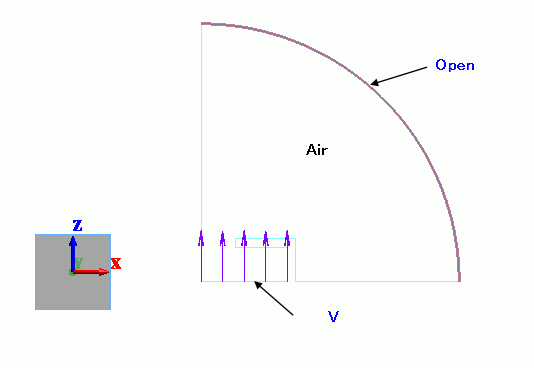
Body Attributes and Materials
|
Body Number/Type |
Body Attribute Name |
Material Name |
|
8/Sheet |
AIR |
000_Air(*) |
* Available from the Material DB
Boundary Conditions
The “speed” boundary condition is set on the bottom and the “open boundary” condition is set on the perimeter.
|
Boundary Condition Name/Topology |
Tab |
Boundary Condition Type |
Settings |
|
v/Edge |
Acoustic |
Speed |
1[m/s] |
|
Open/Face |
Acoustic |
Open boundary |
|
Results
The Figure below is the frequency plot of the sound pressure level [dB] at x=0, Z=10.
It is peaked at 8.9[kHz].
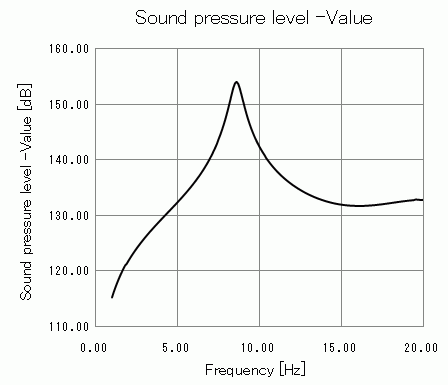
It is very close to 8.46[kHz], the result calculated from the Helmholtz resonance equation below.
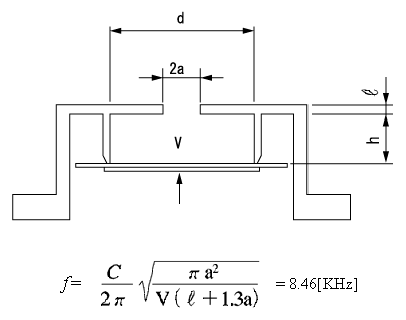 |
| C: Sound speed, V: Volume of cavity |
The gradation contour of the sound pressure level at 8.6[Hz] is shown below.
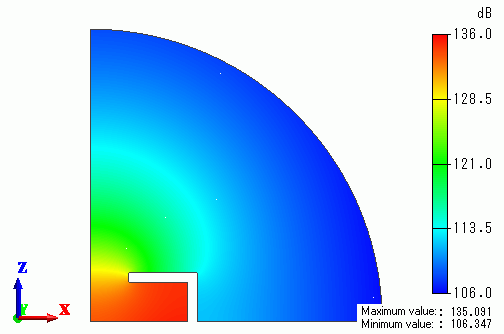
The sound pressure is quite high in the cavity.

